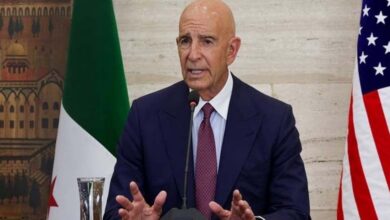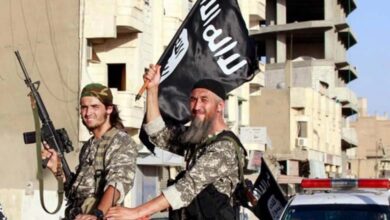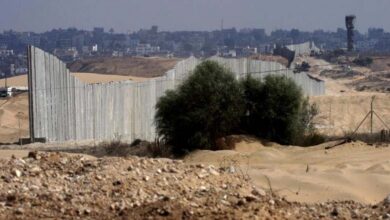Global map of the confrontation with the Muslim Brotherhood: bans, classifications, and diversified measures

Over the past twelve years, the Muslim Brotherhood has been subjected to increasingly severe measures around the world, effectively bringing an end to nearly a century of extremism and terrorism associated with the movement.
In this context, the White House announcement that President Donald Trump has initiated procedures to classify some branches of the Muslim Brotherhood as foreign terrorist organizations is not unprecedented. Rather, it is the culmination of counterterrorism efforts undertaken by various countries across Africa, Europe, Asia, and Latin America.
This report highlights global measures against the Brotherhood in three key categories: countries that have designated the group as a terrorist organization, countries preparing to ban it or taking preliminary punitive actions, and countries placing it under strict surveillance.
Countries that have officially banned and designated the Muslim Brotherhood as a terrorist organization
In recent decades, bans have been imposed on Brotherhood branches in eleven countries spanning Asia to the Americas via Africa.
Syria: the Baath regime banned the Muslim Brotherhood in the 1960s and 1980s.
Russia (2003): the Supreme Constitutional Court criminalized the group’s activities and declared it a terrorist organization, making Russia the first foreign country to do so following acts of sabotage attributed to the group in the North Caucasus.
Kazakhstan (2006): the second foreign country to classify the Brotherhood as a terrorist group, following a ruling by the Supreme Constitutional Court.
Egypt (2013): the Brotherhood was designated under Article 86 of the Penal Code; more than 1,400 members were convicted based on internal archives documenting the hierarchical structure of the group’s secret units.
United Arab Emirates (2014): 83 organizations, including the Muslim Brotherhood and ISIS, were designated as terrorist entities under Federal Law No. 7 of 2014 on counterterrorism.
Saudi Arabia (2014): the group was designated a terrorist organization in the kingdom’s first official list of its kind, which included several domestic and foreign organizations.
Libya (2019): the House of Representatives outlawed the Brotherhood, classifying it as a banned terrorist organization.
Comoros (2023): the Brotherhood was designated a terrorist organization by decree of the Minister of the Interior.
Paraguay (2023): the Permanent Committee of the National Congress approved a resolution recognizing the Brotherhood as a terrorist organization threatening international security and stability.
Jordan (2025): the Ministry of Interior banned all Brotherhood activities and declared it an unlawful association.
Kenya (2025): authorities added the Brotherhood and its splinter group Hizb ut-Tahrir to the list of terrorist entities under the anti-terrorism law.
Countries moving toward designation or taking preliminary or punitive measures
United States (2025): President Donald Trump initiated procedures to classify certain branches of the Brotherhood as foreign terrorist organizations. At the state level, Texas recently designated the Muslim Brotherhood and the Council on American-Islamic Relations (CAIR) as foreign terrorist organizations.
Austria: authorities are considering banning political Islamist organizations, including the Brotherhood. In 2019, Austria banned the group’s symbols and opened judicial investigations in 2020.
Germany: authorities have banned a number of associations linked to the Brotherhood, such as Muslim Interaktiv, while keeping other key structures, including the German Muslim Community, under surveillance without banning them.
Mauritania: authorities have periodically taken punitive measures, including the 2014 dissolution of the country’s largest Brotherhood-affiliated association, Al-Mustaqbal.
Bahrain: in 2017, authorities declared that the Brotherhood had harmed Egypt and Gulf countries, viewing it as a terrorist organization, although no official designation has been issued.
Oman: the first Gulf country to warn of the Brotherhood’s threat. In 1994, authorities arrested a group of Omanis affiliated with the Brotherhood for attempting to overthrow the regime by force. Sentences ranged from life imprisonment to the death penalty before a royal pardon was granted in 1995. Since then, the Brotherhood’s presence has been limited to an intellectual current without official organizational activity.
France: in June, authorities dissolved the European Institute of Human Sciences (IESH), which is linked to the Brotherhood, and conducted an intelligence review of the group’s activities the same year, without formally designating it as a terrorist organization.
Tunisia: authorities dismantled the Brotherhood’s rule in 2021 and initiated judicial proceedings against its leaders. The group remains under heavy monitoring without a complete ban.
Canada: a 2015 Senate recommendation opened a review into the Brotherhood that may lead to its classification, amid growing calls for its designation as a terrorist organization.
Countries placing the Brotherhood under surveillance
According to a 2023 study by the Center for the Study of Extremism at Georgetown University, authored by leading scholar Lorenzo Vidino, the European Union and its 27 member states place the Brotherhood and its affiliated organizations under surveillance and hold a negative view of its activities.
United Kingdom: in 2014, authorities conducted a comprehensive review of the Brotherhood’s activities without designating it as a terrorist organization.
These transcontinental measures continue to target the group and its leaders worldwide, writing the final chapter in a history marked by extremism and the emergence of numerous terrorist movements over nearly a century.












